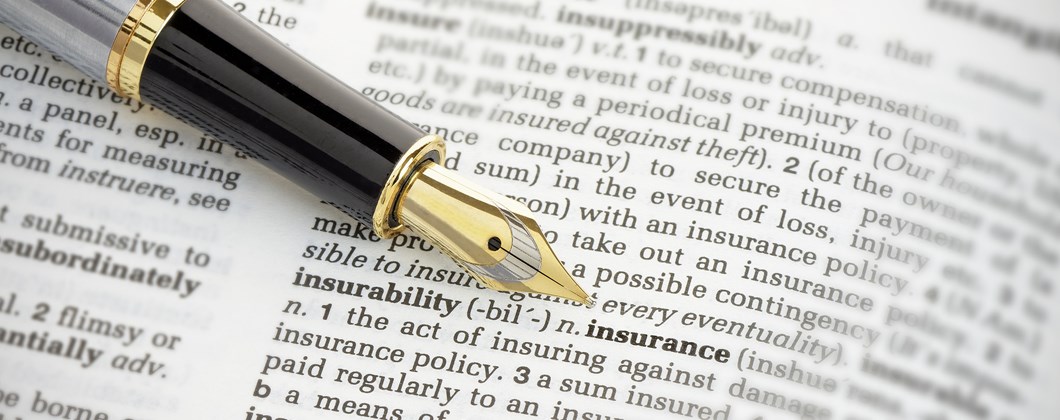The difficult Professional Indemnity market, and how PI insurance buyers can help their broker to achieve the best solution possible for their business.

Sean Trent, Divisional Director of GRP's London Market broker Lonmar Global Risks discusses the difficult Professional Indemnity market, and how PI insurance buyers can help their broker to achieve the best solution possible for their business:
Is the current Professional Indemnity market harder than Only Connect? Yes, it really might be even harder than the fiendishly difficult BBC quiz show.
It is certainly the most difficult and challenging insurance market I’ve experienced in over 30 years in the industry, and the underlying problems were all solidly in place and building long before we could all spell 'coronavirus'.
Causes of the hard market
A perfect storm was brewing. Historically low premiums due to overcapacity; increasing claims; poor investment returns for insurers; increased capital adequacy requirements due to Solvency II; increased claims reserving due to the Ogden Report; increased reinsurance rates - these all meant market capacity was reducing and premiums increasing, well before Covid-19. Professional Indemnity was one of the worst performing classes in terms of claims costs, as identified in the 2018 Lloyd’s thematic review, which was swiftly followed by several insurers withdrawing from the space altogether.
Then the small matter of Covid-19 arrived. It is still far too early to accurately understand the potential for worldwide losses, but the level of uncertainty generated has been massive. Even where a loss may not be indemnified, the potential for huge legal costs being incurred to determine this is very real. Insurers are duly concerned as to the general economic outlook, which has a proven link to claims activity engendering a cautious approach where new business is concerned.
Trade sector related impacts
There are sector related issues that have added to these general pressures on the PI market. For example, the shockwaves of the 2017 Grenfell fire were rippling through the construction and property insurance markets and having a knock on impact on construction related trades’ PI:
- The lack of RICS compliant cover for surveyors became such an issue that RICS had to amend their wording to more realistically reflect the market conditions.
- Many architects are now facing potential personal exposure to Collateral Warranties they may have signed in good faith in the preceding 12 years, as cladding and fire safety cover has been retrospectively removed from their claims made
Any risk directly or indirectly involved in property (RICS, Architects, Design & Construction) insurance (brokers, MGAs) and financial institutions (hedge funds, corporate finance, DFMs and IFAs) is particularly challenging. The market is such at present that it cannot be assumed that cover will always be available. Insurers are reducing their capacity and increasing their rate, which means simply maintaining their renewal book is a safer territory for them than looking at potentially “high risk” new business cases, which they don’t have enough capacity to accept anyway.
How has this affected Insureds?
Significant rate increases are having to be met even whilst facing reductions in the availability and breadth of cover. Where cover was Any One Claim with Defence Costs in Addition, it may now be quoted Aggregate inclusive of Defence Costs, for example.
So, we’ve established that it is tough out there now. How can we work together and try and mitigate that?
How to get the best results in the hard market
To get the best result for their clients, brokers need to ensure they can provide Underwriters with all necessary information, along with a clear & succinct summary of the risk, and their client’s objectives:
Submission Requirements
- A current and fully completed renewal Proposal Form that is relevant to your profession, ideally typed rather than hand-written - if an underwriter can’t read it easily, they probably won’t quote it. Any supplementary forms by profession must also be provided – eg Cladding for architects, Tax Mitigation for accountants.
- Supporting information such as specimen contract terms (detailing held harmless provisions or waivers, limitation of liability etc).
- Report and accounts (often required for larger or more complex Professional Indemnity risks).
- Fully confirmed claims experience, ideally from the prior insurers, for at least 6 years (note, some insurers will require the full history) with a breakdown between claim settlements and legal costs.
- For any material claims or reserves, provide details of any risk improvements implemented to avoid reoccurrence or background details respectively.
- A copy of the expiring policy schedule and terms & conditions, so we can ensure cover is on a comparable basis - and so we consider any need to notify claims to the current policy if the insurance market will not continue to offer comparable cover.
- Ensure you comply with your duty of fair presentation under the Insurance Act. Check your proposal form carefully to ensure you have disclosed all material information, including any claims or circumstances that you have not yet notified.
You should also agree on a clear renewal strategy – there is little to be gained by firing off copies of a Proposal Form to multiple brokers, and in actual fact this will work against you – insurers are unlikely to focus on a case that has been sent in by four different brokers if they can work exclusively with a broker on another opportunity.
Whichever broker you choose to engage with, it is crucial to start the renewal process at an early stage to compile the best presentation on your first approach to the market.
Lonmar Professions, part of GRP Group, is a specialist Professional Indemnity broker with direct access to Lloyd’s of London & London Market insurers, and an in-house claims team. Lonmar Professions deal direct with clients, and also support GRP brokers with the placement of difficult complex or high risk Professional Indemnity insurance.
